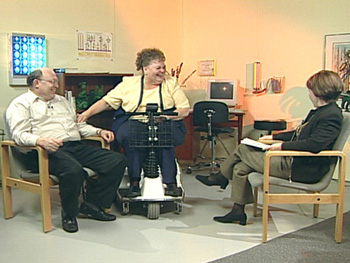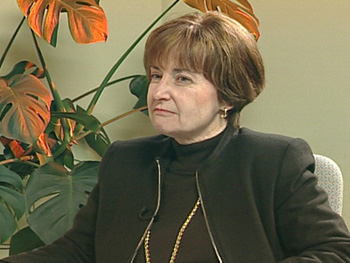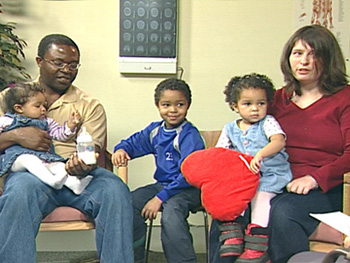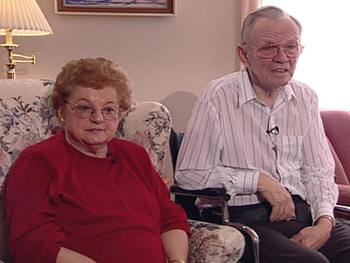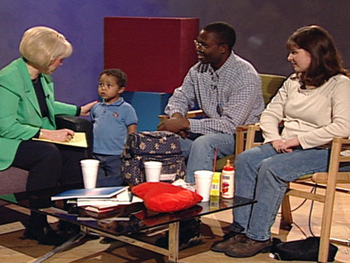Publications that cite the
CALGARY FAMILY ASSESSMENT AND INTERVENTION MODELS (CFAM/CFIM)
Selected Bibliography
Updated: December 18, 2018
BOOKS
Duhamel, F. (Ed.). (2015). La santé et la famille: Une approche systémique en soins infirmiers [Families and health: A systemic approach in nursing care] (3rd ed.) Montreal, Quebec, Canada: Gaëtan Morin editeur, Chenelière Éducation. [In French] (previous editions: 1st ed. 1995, 2nd ed. 2007)
Kobayashi, N, (2011). Family assessment workbook Part II: Guide to an expert in facilitating case conference and study by FASC methods. Tokyo, Japan: Ishiyaku Publishers. [in Japanese].
Wacharasin, C. (2007). Theoretical foundations for advanced family nursing. Chonburi, Thailand: Faculty of Nursing, Burapha University. [in Thai]
Wacharasin, C. (2017). Nursing interventions for families experiencing chronic illness. Chon-Buri, Thailand: Chonburi Printing. [in Thai]
Wright, L. M. (2005). Spirituality, suffering, and illness: Ideas for healing. Philadelphia, PA: F.A. Davis. (Translation: Portuguese)
Wright, L. M. (2017). Suffering and spirituality: The path to illness healing. Calgary, Alberta, Canada: 4th Floor Press. Kindle version available from Amazon.com.
Wright, L. M., & Bell, J. M. (2009). Beliefs and illness: A model for healing. Calgary, Alberta, Canada: 4th Floor Press. Kindle version available from Amazon.com. (Translation: Japanese)
Wright, L. M., & Leahey, M. (2013). Nurses and families: A guide to family assessment and intervention (6th ed.). Philadelphia, PA: F.A. Davis. (previous editions: 1st ed. 1984; 2nd ed. 1994; 3rd ed. 2000; 4th ed., 2005, 5th ed., 2009) (Translations: French, German, Icelandic, Japanese, Korean, Portuguese, Swedish)
CONCEPTUAL ARTICLES/BOOK CHAPTERS
Bell, J. M. (1995). What is “family”? Pertubations and possibilities [Editorial]. Journal of Family Nursing, 1, 131-133. https://doi.org/10.1177/107484079500100201
Bell, J. M. (1995). Wanted: Family nursing interventions [Editorial]. Journal of Family Nursing, 1, 355-358. https://doi.org/10.1177/107484079500100401
Bell, J. M. (1996). Signal events in family nursing [Editorial]. Journal of Family Nursing, 2, 347-349. https://doi.org/10.1177/107484079600200401
Bell, J. M. (1999). Calgary Family Nursing Model: Practical and research tasks in family nursing. Japanese Journal of Research in Family Nursing, 5(1), 26-33. [In Japanese]
Bell, J. M. (2000). Encouraging nurses and families to think interactionally: Revisiting the usefulness of the circular pattern diagram [Editorial]. Journal of Family Nursing, 6, 203-209. https://doi.org/10.1177/107484070000600301
Bell, J. M. (2002). 20th anniversary of the Family Nursing Unit [Editorial]. Journal of Family Nursing, 8, 175-177. https://doi.org/10.1177/107484070200800301
Bell, J. M. (2003). Clinical scholarship in family nursing [Editorial]. Journal of Family Nursing, 9, 127-129. https://doi.org/10.1177/1074840703009002001
Bell, J. M. (2007). Distinguished Contribution to Family Nursing Award: Dr. Lorraine M. Wright. Journal of Family Nursing, 13, 3-8. https://doi.org/10.1177/1074840706297947
Bell. J. M. (2008). The Family Nursing Unit, University of Calgary: Reflections on 25 years of clinical scholarship (1982-2007) and closure announcement [Editorial]. Journal of Family Nursing, 14, 275-288.https://doi.org/10.1177/1074840708323598
Bell, J. M. (2012). Making ideas “stick”: The 15-Minute Family Interview [Editorial]. Journal of Family Nursing, 18, 171-174. https://doi.org/10.1177/1074840712443663
Bell, J. M., & Wright, L. M. (2015). The Illness Beliefs Model: Advancing practice knowledge about illness beliefs, family healing, and family interventions [Editorial]. Journal of Family Nursing, 21, 179-185. https://doi.org/10.1177/1074840715586889
Bohn, U., Wright, L. M., & Moules, N. J. (2003). A Family Systems Nursing interview following a myocardial infarction: The power of commendations. Journal of Family Nursing, 9, 151-165. https://doi.org/10.1177/1074840703009002003
Boyd, M. A., & Houger Limacher, L. (2008). Family assessment and intervention. In W. Austin & M. A. Boyd (Eds.), Psychiatric care for Canadian practice (pp. 270-286). Philadelphia, PA: Lippincott Williams & Wilkins.
Campagna, L., & Duhamel, F. (2000). Les croyances : Élément –clef dans une approche systémique familiale de Calgary [Beliefs, a key element in the Calgary Family Assessment Model]. Sciences pastorales, 19(2), 119-134.
Duhamel, F. (1995). The practice of family nursing care: Still a challenge! Canadian Journal of Nursing Research, 27(1), 7-11.
Friedman, M. M., & Levac, A. M. (1997). The family nursing process. In M. M. Friedman (Ed.), Family nursing: Research, theory and practice (4th ed., pp. 49-72). Stamford, CT: Appleton & Lange.
Gomes, B. M. R. (May, 2014). Calgary Family Assessment and Intervention Model: Influencing nursing practice and theory. Journal of Nursing UFPE on line, Recife 8(4). doi: 10.5205/01012007
Gottlieb, L. (2007). A tribute to the Calgary Family Nursing Unit: Lessons that go beyond family nursing [Editorial]. Canadian Journal of Nursing Research, 39(3), 7-11.
Hilbert, G. (1998). Whither goest family nursing? [Guest Editorial]. Journal of Family Nursing, 4, 227-230. https://doi.org/10.1177/107484079800400301
Holtslander, L. (2005). Clinical application of the 15-Minute Family Interview: Addressing the needs of postpartum families. Journal of Family Nursing, 11, 5-18. https://doi.org/10.1177/1074840704273092
Houger Limacher, L., & Wright, L. M. (2003). Commendations: Listening to the silent side of a family intervention. Journal of Family Nursing, 9, 130-135. https://doi.org/10.1177/1074840703009002002
Houger Limacher, L. (2007). Distinguished Contribution to Family Nursing Award: Dr. Maureen Leahey [Guest Editorial]. Journal of Family Nursing, 13, 9-12. https://doi.org/10.1177/1074840706297986
Kent-Wilkinson, A. (1999). Forensic family genogram: An assessment and intervention tool. Journal of Psychosocial Nursing and Mental Health, 37, 52-56. https://doi.org/10.3928/0279-3695-19990901-13
Kobayashi, N. (2011). Family Systems Practice in home visit nursing. Tokyo, Japan: Houmon Kango to Kaigo, 16(11), 918-921. [in Japanese]
Kobayashi, N. (2014). Family nursing nowadays: Family care, support and management. No.6: Nursing care for families when a family member is dying. Nagoya, Japan: Nissoken. Kango-Syunin Gyoumu, 24(1), 77-82. [in Japanese]
Laliberte, S., Bohn, U., Bartlett, K. R., West, C., & Englehart, R. (2002). Remembering September 11, 2001: Families and family nursing [Guest Editorial]. Journal of Family Nursing, 8, 3-10. https://doi.org/10.1177/107484070200800101
Leahey, M., & Harper-Jaques, S. (1996). Family-nurse relationships: Core assumptions and clinical implications. Journal of Family Nursing, 2, 133-151. https://doi.org/10.1177/107484079600200203
Leahey, M., & Harper-Jaques, S. (2010). Integrating family nursing into a mental health urgent care practice framework: Ladders for learning. Journal of Family Nursing, 16, 196-212. https://doi.org/10.1177/1074840710365500
Leahey, M., Stout, L., & Myrah, I. (1991). Family systems nursing: How do you practice it in an active community hospital? The Canadian Nurse, February, 31-33.
Leahey, M., & Svavarsdottir, E. K. (2009). Implementing family nursing: How do we translate knowledge into clinical practice? Journal of Family Nursing, 15, 445-460. https://doi.org/10.1177/1074840709349070
Leahey, M., & Wright, L. M. (1985). Intervening with families with chronic illness. Family Systems Medicine, 3, 60-69. http://dx.doi.org/10.1037/h0089647
Leahey, M., & Wright, L. M. (1987). Families and chronic illness: Assumptions, assessment and intervention. In L. M. Wright & M. Leahey (Eds.), Families & chronic illness (pp. 55-76). Springhouse, PA: Springhouse.
Leahey, M., & Wright, L. M. (2016). Application of the Calgary Family Assessment and Interventions Models: Reflections on the reciprocity between the personal and the professional. Journal of Family Nursing, 22, 450-459. https://doi.org/10.1177/1074840716667972
Levac, A. M .C. (1995). [Review of Families with health problems: Assessment and intervention (5 educational videotapes). Produced by W. L. Watson, Calgary, Alberta, University of Calgary]. Journal of Family Nursing, 1, 107-112. https://doi.org/10.1177/107484079500100108
Levac, A. M. C., Wright, L. M., & Leahey, M. (2002). Children and families: Models for
assessment and intervention. In J. A. Fox (Ed.), Primary health care of infants, children, and adolescents (2nd ed., pp. 10-19). St Louis, MO: Mosby.
Loos, F., & Bell, J. M. (1990). Circular questions: A family interviewing strategy.Dimensions in Critical Care Nursing, 9(1), 46-53.
McElheran, N. G., & Harper-Jaques, S. R. (1994). Commendations: A resource intervention for clinical practice. Clinical Nurse Specialist, 8(1), 7-10, 15.
Robinson, C. A. (1994). Nursing interventions with families: A demand or an invitation to change? Journal of Advanced Nursing, 19, 897-904. https://doi.org/10.1111/j.1365-2648.1994.tb01167.x
Robinson, C. A. (1995). Beyond dichotomies in the nursing of persons and families. Journal of Nursing Scholarship, 27, 116-120. https://doi.org/10.1111/j.1547-5069.1995.tb00833.x
Robinson, C. A. (1996). Health care relationships revisited. Journal of Family Nursing, 2, 152-173. https://doi.org/10.1177/107484079600200204
Robinson, C. A., Wright, L. M., & Watson, W. L. (1994). A nontraditional approach to family violence. Archives of Psychiatric Nursing, 8, 30-37. https://doi.org/10.1016/0883-9417(94)90018-3
Østergaard, B., & Wagner, L. (2014). Family nursing in Denmark. Current status and future perspectives. Journal of Family Nursing, 20, 487-500. https://doi.org/10.1177/1074840714557780
Schober, M., & Affara, F. (2001). The family nurse: Frameworks for practice. Geneva, Switzerland: International Council of Nurses.
Simpson, P. (2015). Family assessment and interventions. In W. Austin & M. A. Boyd (Eds.), Psychiatric & mental health nursing for Canadian practice (pp. 259-274). Philadelphia, PA: Walters Kluwer.
Sveinbjarnardottir, E. K., & Svavarsdottir, E. K. (2018). Drawing forth family strengths in short therapeutic conversations from a psychiatric nursing perspective. Perspectives in Psychiatric Care. Advance online publication. https://doi.org/10.1111/ppc.12329
Tapp, D. M. (2000). Family nursing in the fast lane: Therapeutic conversations that count. Canadian Nurse, 96(6), 29-32.
Watson, W. L. (1987). Intervening with aging families and Alzheimer's disease. In L. M. Wright & M. Leahey (Eds.), Families & chronic illness (pp. 381-404). Springhouse, PA: Springhouse.
Watson, W. L., & Nanchoff-Glatt, M. (1990). A family systems nursing approach to premenstrual syndrome. Clinical Nurse Specialist, 4, 3-9.
Watson, W. L., & Wright, L. M. (1984). The elderly and their families: An interactional view. In J. C. Hansen & E. Imber Coppersmith (Eds.), Families with handicapped member (pp. 75-78). Rockville, MD: Family Therapy Collections, Aspen Systems.
Wright, L. M. (1989). When clients ask questions: Enriching the therapeutic conversation. Family Therapy Networker, 13(6), 15-16.
Wright, L. M. (1990). Research as a family therapy intervention technique. Contemporary Family Therapy: An International Journal, 12, 477-484. https://doi.org/10.1007/BF00901035
Wright, L. M. (2015). Brain science and illness beliefs: An unexpected explanation of the healing power of therapeutic conversations and the family interventions that matter. Journal of Family Nursing, 21, 186-205. https://doi.org/10.1177/1074840715575822
Wright, L. M. (2015). Eckhart Tolle’s spiritual words of wisdom: Application to family nursing practice [Editorial]. Journal of Family Nursing, 21, 503-507. https://doi.org/10.1177/1074840715606244
Wright, L. M., & Bell, J. (1981). Nurses, families and illness: A new combination. In D. Freeman & B. Trute (Eds.), Treating families with special needs (pp. 199-205). Ottawa, Ontario, Canada: The Canadian Association of Social Workers.
Wright, L. M., & Bell, J. M. (2004). Retrospective — Nurses, families, and illness: A new combination [Editorial]. Journal of Family Nursing, 10, 3-11. https://doi.org/10.1177/1074840703261066
Wright, L. M., & Leahey, M. (1985). Families with chronic illness: Three intervention approaches. Continuing Care Coordinator, March, 35-36.
Wright, L. M., & Leahey, M. (1987). Families and life-threatening illness: Assumptions, assessment and intervention. In M. Leahey & L.Wright (Eds.), Families & life-threatening illness (pp. 45-58). Springhouse, PA: Springhouse.
Wright, L. M., & Leahey, M. (1987). Families and psychosocial problems: Assumptions, assessment and intervention. In M. Leahey & L.Wright (Eds.), Families & psychosocial problems (pp. 17-34). Springhouse, PA: Springhouse.
Wright, L. M., & Leahey, M. (1990). Trends in the nursing of families. Journal of Advanced Nursing, 15, 148-154. https://doi.org/10.1111/j.1365-2648.1990.tb01795.x
Wright, L. M., & Leahey, M. (1994). Calgary Family Intervention Model: One-way to think about change. Journal of Marital and Family Therapy, 20, 381-395. https://doi.org/10.1111/j.1752-0606.1994.tb00128.x
Wright, L. M., & Leahey, M. (1999). Maximizing time, minimizing suffering: The 15-minute (or less) family interview. Journal of Family Nursing, 5, 259-274. https://doi.org/10.1177/107484079900500302
Wright, L. M., & Leahey, M. (2004). How to conclude or terminate with families. Journal of Family Nursing, 10, 379-401. https://doi.org/10.1177/1074840704267451
Wright, L. M., & Leahey, M. (2005). The three most common errors in family nursing: How to avoid or side-step. Journal of Family Nursing, 11, 90-101. https://doi.org/10.1177/1074840704272569
Wright, L. M., & Leahey, M. (2016). Application of the Calgary Family Assessment and Intervention Models: Reflections on the reciprocity between the personal and the professional. Journal of Family Nursing, 22, 450-459. https://doi.org/10.1177/1074840716667972
Wright, L. M., & Levac, A. M. (1993). The non-existence of non-compliant families: The influence of Humberto Maturana. In S.L. Feetham, S.B. Meister, J.M. Bell, & C.L. Gilliss (Eds.), The nursing of families:Theory/research/education/practice (pp.111-117). Newbury Park, CA: SAGE.
Wright, L. M., Watson, W. L., & Duhamel, F. (1985). The Family Nursing Unit: Clinical preparation at the Masters' level. The Canadian Nurse, 81, 26-29.
Wright, L. M., Watson, W. L., & Duhamel, F. (1985). Une formation clinique en centre familial au niveau de la maitrise. L'Infirmiere Canadienne, 10, 31-32.
Wright, L. M., Watson, W. L., & Bell, J. M. (1990). The Family Nursing Unit: A unique integration of research, education and clinical practice. In J. M. Bell, W. L. Watson, & L. M. Wright (Eds.), The cutting edge of family nursing (pp. 95-112). Calgary, Alberta, Canada: Family Nursing Unit Publications. Retrieved from https://dspace.ucalgary.ca/bitstream/1880/45100/3/FNU_CuttingEdge.pdf
DATA-BASED RESEARCH REPORTS
Agren, S., Ericksson, A., Fredrikson, M., Hollman-Frisman, G., & Orwelius, L. (2018). The health promoting conversations intervention for families with a critically ill relative: A pilot study. Intensive and Critical Care Nursing. Advance online publication. https://doi.org/10.1016/j.iccn.2018.04.007
Arestedt, L., Benzein, E., & Persson, C. (2015). Families living with chronic illness: Beliefs about illness, family, and health care. Journal of Family Nursing, 21, 206-231. https://doi.org/10.1177/1074840715576794
Arestedt, L., Persson, C., Ramgard, M., Midwifery, B., & Benzein, E. (2018). Experiences of encounters with healthcare professionals through the lenses of families living with chronic illness. Journal of Clinical Nursing, 27, 836-847. https://doi.org/10.1111/jocn.14126
Aston, M., Price, S., Etowa, J., Vukic, A., Young, L., Hart, C.,…Randel, P. (2015). The power of relationships: Exploring how public health nurses support mothers and families during postpartum home visits. Journal of Family Nursing, 21, 11-34. https://doi.org/10.1177/1074840714561524
Bell, J. M. (2015). Growing the science of Family Systems Nursing: Family health intervention research focused on illness suffering and family healing [L’avancement de la recherché sur l’intervention infirmiere systémiqueen santé familiale: bilan]. In F. Duhamel (Ed.), La santé et la famille: Une approche systémique en soins infirmiers [Families and health: A systemic approach in nursing care] (3rd ed., 102-125.) Montreal, Quebec, Canada: Gaëtan Morin editeur, Chenelière Éducation. [In French]
Benzein, E., Olin, C., & Persson, C. (2014). ‘You put it all together’ – families’ evaluation of participating in Family Health Conversations. Scandinavian Journal of Caring Sciences, 29, 136-144.https://doi.org/10.1111/scs.12141
Benzein, E., Hagberg, M., & Saveman, B.-I. (2008). ‘Being appropriately unusual’: A challenge for nurses in health-promoting conversations with families. Nursing Inquiry, 15, 106-115. https://doi.org/10.1111/j.1440-1800.2008.00401.x
Benzein, E. G., & Saveman, B. I. (2008). Health-promoting conversations about hope and suffering with couples in palliative care. International Journal of Palliative Nursing, 14, 439-445. https://doi.org/10.12968/ijpn.2008.14.9.31124
Blondal, K., Zoega, S., Hafsteinsdottir, J., Olafsdottir, O, Thorvardardootir, A., Hafsteinsdottir, S., & Sveinsdottir, H. (2014). Attitudes of registered and licensed practical nurses towards the importance of families in surgical hospital units: Findings from the Landspitali University Hospital Family Nursing Implementation Project. Journal of Family Nursing, 20, 355-375. https://doi.org/10.1177/1074840714542875
Boebel Toly, V., Blanchette, J. E., Sikorski, S., Musil, C. M., Al-Hamed, A. (2017). Maternal perspectives of well siblings’ adjustment to family life with a technology-dependent child. Journal of Family Nursing, 23, 392-417. https://doi.org/10.1177/1074840717721705
Braun, V. F., & Foster, C. (2011). Family nursing: Walking the talk. Nursing Forum, 46, 11-21. https://doi.org/10.1111/j.1744-6198.2010.00202.x
Broekema, S. Luttik, M. L. A., Steggerda, G. E., Paans, W., & Roodbol, P. F. (2018). Measuring change in nurses’ perceptions about family nursing competency following a 6-day educational intervention. Journal of Family Nursing, 24, 508-537. https://doi.org/10.1177/1074840718812145
Bruce, E., Dorell, A., & Lindh, V. (2016). Translation and testing of the Swedish version of Iceland-Family Perceived Support Questionnaire with parents of children with congenital heart defects. Journal of Family Nursing, 22, 298-320. https://doi.org/10.1177/1074840716656343
Clausson, E., & Berg, A. (2008). Family intervention sessions: One useful way to improve schoolchildren’s mental health. Journal of Family Nursing, 14, 289-313. https://doi.org/10.1177/1074840708322758
Colichi, R. M. B., Bocchi, S. C. M., Lima, S. A. M., & Popim, R. C. (2017). Interactions between quality of life at work and family. International Archives of Medicine, 9. http://dx.doi.org/10.3823/2229
Dalteg, T., Benzein, E., & Sandgren, A., Malm, D., Arestedt, K. (2016). Associations of emotional distress and perceived health in persons with atrial fibrilliation and their partners using the Actor-Partner Independence Model. Journal of Family Nursing, 22, 368-391. https://doi.org/10.1177/1074840716656815
Dalteg, T., Sandberg, J., Malm, D., Sandgren, A., & Benzein, E. (2017). The heart is a representation of life: An exploration of illness beliefs in couples living with atrial fibrillation. Journal of Clinical Nursing, 26, 3699-3709. https://doi.org/10.1177/1074840718815844
Dorell, A., Bäckström, B., Ericsson, M., Johansson, M., Östlund, U., & Sundin, K. (2016). Experiences with Family Health Conversations at residentials homes for older people.
Clinical Nursing Research, 25, 560-582. https://doi.org/10.1177/1054773814565174
Duhamel, F. (1994). A family systems approach: Three families with a hypertensive member. Family Systems Medicine, 12, 391-404. http://dx.doi.org/10.1037/h0089166
Duhamel, F. (1997). Intervention systémique infirmière auprès de couples dont un des membres est atteint d'insuffisance cardiaque [A family systems approach for families with one member experiencing heart failure]. Canadian Journal of Cardiovascular Nursing, 8, 16-22. [in French]
Duhamel, F. (2010). Implementing family nursing: How do we translate knowledge into
clinical practice? Part II: The evolution of 20 years of teaching, research, and practice to a Center of Excellence in Family Nursing. Journal of Family Nursing, 16, 8-25. https://doi.org/10.1177/1074840709360208
Duhamel, F. (2017). Translating knowledge from a Family Systems Approach to clinical practice: Insights from knowledge translation research experiences. Journal of Family Nursing, 23, 461-487. https://doi.org/10.1177/1074840717739030
Duhamel, F., & Dupuis, F. (2003). Families in palliative care: Exploring family and health – care professionals’ beliefs. International Journal of Palliative Nursing, 9, 113-119. https://doi.org/10.12968/ijpn.2003.9.3.11481
Duhamel, F., & Dupuis, F. (2004). Guaranteed returns: Investing in conversations with families of cancer patients. Clinical Journal of Oncology Nursing, 8, 68-71. doi: 10.1188/04.CJON.68-71
Duhamel, F., Dupuis, F., Reidy, M., & Nadon, N. (2007). A qualitative evaluation of a family nursing intervention. Clinical Nurse Specialist, 21, 43-49. doi: 10.1097/00002800-200701000-00009
Duhamel, F., Dupuis, F., & Wright, L. M. (2009). Families’ and nurses’ responses to the “One Question Question”: Reflections for clinical practice, education, and research in family nursing. Journal of Family Nursing, 15, 461-485. https://doi.org/10.1177/1074840709350606
Duhamel, F., & Talbot, L. (2004). A constructivist evaluation of Family Systems Nursing interventions with families experiencing cardiovascular and cerebrovascular illness. Journal of Family Nursing, 10, 12-32. https://doi.org/10.1177/1074840703260906
Duhamel, F., Dupuis, F., Turcotte, A., Martinez, A.-M., & Goudreau, J. (2015). Integrating the Illness Beliefs Model in clinical practice: A Family Systems Nursing Knowledge Utilization Model. Journal of Family Nursing, 21, 322-348. https://doi.org/10.1177/1074840715579404
Duhamel, F., Watson, W. L., & Wright, L. M. (1994). A family systems approach to hypertension. Canadian Journal of Cardiovascular Nursing, 5, 14-24.
Dupuis, F., Duhamel, F., & Gendron, S. (2011). Transitioning care of an adolescent with cystic
fibrosis: Development of a systemic hypothesis between parents, adolescents and health care professionals. Journal of Family Nursing, 17, 291-311.https://doi.org/10.1177/1074840711414907
Erlingsson, C. (2009). Undergraduate nursing students writing therapeutic letters to families: An educational strategy. Journal of Family Nursing, 15, 83-101. https://doi.org/10.1177/1074840708330447
Ersig, A. L., Werner-Lin, A., Hoskins, L., Young, J., Loud, J. T., Peters, J., & Greene, M. H. (2018). Legacies and relationships: Diverse social networks and BRCA1/2 risk management decisions and actions. Journal of Family Nursing. Advance online publication. https://doi.org/10.1177/1074840718815844
Freed, P. E., SmithBattle, L., Leander, S., & Westhus, N. (2010). Therapeutic letters in undergraduate nursing education: Ideas for clinical nurse educators. Nurse Education Today, 30, 470-475. https://doi.org/10.1016/j.nedt.2009.10.009
Frisman, G. H., Wahlin, I., Orvelius, L., & Agren, A. (2018). Health promoting conversations – A novel approach to families experiencing critical illness in the ICU environment. Journal of Clinical Nursing, 27, 631-639. https://doi.org/10.1111/jocn.13969
Gariss, B., R., & Weber, A. J. (2018). Relationships influence health: Family theory in health-care research. Journal of Family Theory & Review. Advance online publication. doi: https://doi.org/10.1111/jftr.12294
Ginter, A. C., & Radina, M. E. (2018). “I was there with her”: Experiences of mothers of women with breast cancer. Journal of Family Nursing. Advance online publication. https://doi.org/10.1177/1074840718816745
Gisladottir, M., & Svavarsdottir, E. K. (2017). The effectiveness of therapeutic conversation intervention for caregivers of adolescents with ADHD: A quasi-experimental design. Journal of Psychiatric and Mental Health Nursing, 24, 15-27. https://doi.org/10.1111/jpm.12335
Gisladottir, M., Treasure, J., & Svavarsdottir, E. K. (2017). Effectiveness of therapeutic conversation intervention among caregivers of people with eating disorders: Quasi-experimental design. Journal of Clinical Nursing, 26, 735-750. https://doi.org/10.1111/jocn.13412
Goudreau, J., & Duhamel, F. (2003). Interventions in perinatal family care: A participatory study. Families, Systems, & Health, 21, 165-180. http://dx.doi.org/10.1037/1091-7527.21.2.165
Goudreau, J., Duhamel, F., & Ricard, N. (2006). The impact of a Family Systems Nursing educational program on the practice of psychiatric nurses. A pilot study. Journal of Family Nursing, 12, 292-306. https://doi.org/10.1177/1074840706291694
Hagedoorn, E. I., Paan, W., Jarsma, T., Keers, J. C., van der Scharns, C., & Luttik, M. L. (2017). Aspects of family caregiving as addressed in planned discussions between nurses, patients with chronic disease and family caregivers: A qualitative content analysis. BMC Nursing, 16:37. https://doi.org/10.1186/s12912-017-0231-5
Halldorsdottir, B. S., & Svavarsdottir, E. K. (2012). Purposeful therapeutic conversations: Are they effective for families of individuals with COPD? A quasi-experimental study. Nordic Journal of Nursing Research, 103(32), 48-51. https://doi.org/10.1177/010740831203200111
Holtslander, L., Solar, J., & Smith, N. R. (2013). The 15-Minute Family Interview as a learning strategy for senior undergraduate nursing students. Journal of Family Nursing, 19, 230-248. https://doi.org/10.1177/1074840712472554
Houger Limacher, L. (2003). Commendations: The healing potential of one Family Systems Nursing intervention. Unpublished doctoral thesis, University of Calgary, Alberta, Canada. Retrieved from http://dspace.ucalgary.ca/handle/1880/49062
Houger Limacher, L., & Wright, L.M. (2006). Exploring the therapeutic family intervention of commendations: Insights from research. Journal of Family Nursing, 12, 307-331. https://doi.org/10.1177/1074840706291696
Houger Limacher, L. (2008). Locating relationships at the heart of commending practices. Journal of Systemic Therapies, 27, 90-105. https://doi.org/10.1521/jsyt.2008.27.4.90
Hsiao, C.-Y., & Tsai, Y.-F. (2015). Factors associated with the perception of family nursing practice among mental health nurses in Taiwan. Journal of Family Nursing, 21, 508-528. https://doi.org/10.1177/1074840715606543
Iwasaki, T., Yamamoto-Mitani, N., Sato, K., Yumoto, Y., Noguchi-Watanabe, M., & Ogata, Y. (2017). A purposeful yet non-imposing approach: How Japanese home care nurses establish relationships with older clients and their families. Journal of Family Nursing, 23, 534-561. https://doi.org/10.1177/1074840717743247
Johnson, J., Johnson, O., Heyhoe, J., Fielder, C., & Dunning, A. (2018). Parent experiences and preferences with dysmelia is identified during the prenatal and perinatal periods: A qualitative study into family nursing care for rare diseases. Journal of Family Nursing, 24, 271-293. https://doi.org/10.1177/1074840718772808
Kamban, S., & Svavarsdottir, E. K. (2013). Does a therapeutic conversation intervention in an acute paediatric setting make a difference for families of children with bronchiolitis caused by respiratory syncytial virus (RSV)? Journal of Clinical Nursing, 22, 2723-2733. https://doi.org/10.1111/j.1365-2702.2012.04330.x
Kamibeppu, K., Murayama, S., Ozono, S., Sakamoto, N., Iwai, T., Asami, K.,…Ishida, Y. (2015). Predictors of posttraumatic stress symptoms among adolescent and young adult survivors of childhood cancer: Importance of monitoring survivors’ experiences of family functioning. Journal of Family Nursing, 21, 529-550. https://doi.org/10.1177/1074840715606247
Kiriake, A., & Moriyama, M. (2016). Development and testing of the Partnership Scale for Primary Caregivers Caring for Patients with Dementia. Journal of Family Nursing, 22, 339-367. https://doi.org/10.1177/1074840716656450
Knafl, K., Leeman, J., Havill, N. L., Crandell, J. L., Sandelowski, M. (2015). The contribution of parent and family variables to the well-being of youth with arthritis. Journal of Family Nursing, 21, 579-616. https://doi.org/10.1177/1074840715601475
Konradsdottir, E., & Svavarsdottir, E. K. (2011). How effective is a short-term educational and support intervention for families of an adolescent with type 1 diabetes? Journal for Specialists in Pediatric Nursing, 16, 295-304. https://doi.org/10.1111/j.1744-6155.2011.00297.x
Konradsdottir, E., & Svavarsdottir, E. K. (2013). The role of advanced nurse practitioners in offering brief therapeutic conversation intervention for families of children and adolescents with diabetes Type 1. Nordic Journal of Nursing Research, 33, 44-47. https://doi.org/10.1177/010740831303300310
Leahey, M., Harper-Jaques, S., Stout, L., & Levac, A. M. (1995). The impact of a family systems nursing approach: Nurses’ perceptions. The Journal of Continuing Education in Nursing, 26, 219-225. https://doi.org/10.3928/0022-0124-19950901-08
Leahey, M., & Svavarsdottir, E. K. (2009). How do we translate knowledge into clinical practice? Journal of Family Nursing, 15, 445-460. https://doi.org/10.1177/1074840709349070
Lee, H.-J., Ching-Lan Lin, E., Chen, M.-B., Su, T.-P., Chiang, L.-C. (2018). Randomized, controlled trial of a brief family-centred care programme for hospitalized patients with bipolar disorder and their family caregivers. International Journal of Mental Health Nursing, 27, 61-71. https://doi.org/10.1111/inm.12294
LeGrow, K., & Rossen, B. E. (2005). Development of a professional practice based on a Family Systems Nursing framework: Nurses’ and families’ experiences. Journal of Family Nursing, 11, 38-58. https://doi.org/10.1177/1074840704273508
Leonard, R. A., Linden, M., & Grant, A. (2018). Family-focused practice for families affected by maternal mental illness and substance misuse in home visiting: A qualitative systemic review. Journal of Family Nursing, 24, 128-155. https://doi.org/10.1177/1074840718770612
Martinez, A-M., D’Artois, D., & Rennick, J. E. (2007). Does the 15-minute (or less) family interview influence family nursing practice? Journal of Family Nursing, 13, 157-178. https://doi.org/10.1177/1074840707300750
McKechnie, A. C., Pridham, K., & Tluczek, A. (2016). Walking the “emotional tightrope” from pregnancy to parenthood. Journal of Family Nursing, 22, 74-107. https://doi.org/10.1177/1074840715616603
McLeod, D. L. (2003). Opening space for the spiritual: Therapeutic conversations with families living with serious illness. Unpublished doctoral thesis, University of Calgary, Alberta, Canada. Retrieved from http://dspace.ucalgary.ca/handle/1880/45183
Meiers, S. J., Eggenberger, S. K., & Krumwiede, N. (2018). Development and implementation of a family-focused undergraduate nursing curriculum: Minnesota State University, Mankato. Journal of Family Nursing, 24, 307-344. https://doi.org/10.1177/1074840718787274
Moules, N. J. (2000). Nursing on paper: The art and mystery of therapeutic letters in clinical work with families experiencing illness. Unpublished doctoral thesis, University of Calgary, Alberta, Canada. Retrieved from http://dspace.ucalgary.ca/handle/1880/40483
Moules, N. J., Bell, J. M., Paton, B. I., & Morck, A. C. (2012). Examining pedagogical practices in Family Systems Nursing: Intentionality, complexity, and doing well by families. Journal of Family Nursing, 18, 261-295. https://doi.org/10.1177/1074840711435508
Moules, N. J., Laing, C. M., & Estefan, A. (2018). “Family is who they say they are”a: Examining the effects of cancer on the romantic partners of adolescents and young adults. Journal of Family Nursing, 24, 374-404. https://doi.org/10.1177/1074840718786985
Moules, N. J., Thirsk, L. M., & Bell, J. M. (2006). A Christmas without memories: Beliefs about grief and mothering – A clinical case analysis. Journal of Family Nursing, 12, 426-441. https://doi.org/10.1177/1074840706294244
Neill, S. J., & Coyne, I. (2018). The role of felt or enacted criticism in parents’ decision making in differing contexts and communities: Toward a formal grounded theory. Journal of Family Nursing, 24, 443-469. https://doi.org/10.1177/1074840718783488
Noiseux, S., & Duhamel, F. (2003). La greffe de moelle osseuse chez l’enfant. Évaluation constructiviste de l’intervention auprès des parents [Bone marrow transplant in children: A constructivist evaluation of interventions for the parents]. Perspective infirmière, 1(1), 12-24.
Ostlund, U., Backstrom, B., Lindh, V., Sundin, K., & Saveman, B.-I. (2014). Nurses’ fidelity to theory-based core components when implementing Family Health Conversations—a qualitative inquiry. Scandinavian Journal of Caring Science, 29, 582-590. https://doi.org/10.1111/scs.12178
Ostlund, U., Backstrom, B., Saveman, B.-I., Lindh, V., & Sundin, K. (2016). A Family Systems Nursing approach for families following a stroke: Family Health Conversations. Journal of Family Nursing, 22, 148-171. https://doi.org/10.1177/1074840716642790
Ostlund, U., & Persson, C. (2015). Examining family responses to Family Systems Nursing interventions: An integrative review. Journal of Family Nursing, 20, 259-286. https://doi.org/10.1177/1074840714542962
Persson, C., & Benzein, E. (2014). Family Health Conversations: How do they support health? Nursing Research and Practice, 2014. Article ID 547160. doi: http://dx.doi.org/10.1155/2014/547160 This is a predatory journal
Richardson, A., Yarwood, J., & Richardson, S. (2017). Expressions of cultural safety in public health nursing practice. Nursing Inquiry, 24, e12171. https://doi.org/10.1111/nin.12171
Risling, T., Risling, D., & Holtslander, L. (2017). Creating a social media assessment tool for family nursing. Journal of Family Nursing, 23, 13-33. https://doi.org/10.1177/1074840716681071
Robinson, C. A. (1994). Women, families, chronic illness and nursing interventions: From burden to balance. Unpublished doctoral dissertation, University of Calgary, Alberta, Canada. Retrieved from: http://dspace.ucalgary.ca/handle/1880/48642
Robinson, C. A. (1998). Women, families, chronic illness, and nursing interventions: From burden to balance. Journal of Family Nursing, 4, 271-290. https://doi.org/10.1177/107484079800400304
Robinson, C. A., & Wright, L. M. (1995). Family nursing interventions: What families say makes a difference. Journal of Family Nursing, 1, 327-345. https://doi.org/10.1177/107484079500100306
Rosenbloom, D. A., & Fick, D. M. (2014). Nurse/family caregiver intervention for delirium increases delirium knowledge and improves attitudes toward partnership. Geriatric Nursing, 35, 175-181. http://dx.doi.org/10.1016/j.gerinurse.2013.12.004
Russell, L. T., Beckmeyer, J. J., & Su-Russell, C. (2018). Family-centered care and positive developmental outcomes for youth with special health care needs: Variations across family structures. Journal of Family Nursing, 24, 29-59. https://doi.org/10.1177/1074840717745520
Russell, L. T., Coleman, M., Ganong, L., & Gayer, D. (2016). Divorce and childhood chronic illness: A grounded theory of trust, gender, and third-party care providers. Journal of Family Nursing, 22, 252-278. https://doi.org/10.1177/1074840716639909
Sawin, K. J. (2016). Measurement in family nursing: Established instruments and new directions [Guest Editorial]. Journal of Family Nursing, 22, 287-297. https://doi.org/10.1177/1074840716656038
Sato, N., Araki, A., Ito, R., & Ishigaki, K. (2015). Exploring the beliefs of Japanese mothers caring for a child with disabilities. Journal of Family Nursing, 21, 232-260. https://doi.org/10.1177/1074840715586551
Segaric, C. A., & Hall, W. A. (2015). Progressively engaging: Constructing nurse, patient, and family relationships in acute care settings. Journal of Family Nursing, 21, 35-56. https://doi.org/10.1177/1074840714564787
Sigurdardottir, A. O., Garwick, A., & Svavarsdottir, E. K. (2017). The importance of family support in pediatrics and its impact on healthcare satisfaction. Scandinavian Journal of Caring Sciences, 31, 241-252. https://doi.org/10.1111/scs.12336
Sigurdadottir, A. O., Svavarsdottir, E. K., & Juliusdottir, S. (2015). Family nursing hospital training and the outcome on job demands, control and support. Nurse Education Today, 35, 854-858. https://doi.org/10.1016/j.nedt.2015.03.003
Sigurdardottir, A. O., Svavarsdottir, E. K., Rayens, M. K., & Adkins, S. (2013). Therapeutic conversations intervention in pediatrics: Are they of benefit for families of children with asthma? The Nursing Clinics of North America, 48, 287-304. https://doi.org/10.1016/j.cnur.2013.01.007
Simpson, P., & Tarrant, M. (2006). Development of the Family Nursing Practice Scale. Journal of Family Nursing, 12, 413-425. https://doi.org/10.1177/1074840706290806
Simpson, P., Yeung, K. K., Kwan, T. Y., & Wah, W. K. (2006). Family Systems Nursing: A guide to mental health care in Hong Kong. Journal of Family Nursing, 12, 276-291. https://doi.org/10.1177/1074840706291436
Sullivan-Bolyai, S. (2017). Facilitating family-rich outcomes for families with children who have special health care needs [Guest Editorial]. Journal of Family Nursing, 23, 167-174. https://doi.org/10.1177/1074840717697309
Sundin, K. Pusa, S., Johnsson, C., Saveman, B.-I., & Ostlund, U. (2018). Envisioning the future as expressed within family health conversations by families of persons suffering from stroke. Scandanavian Journal of Caring Sciences, 3, 707-714. https://doi.org/10.1111/scs.12501
Svavarsdottir, E. K. (2008). Excellence in nursing: A model for implementing Family Systems Nursing in nursing practice at an institutional level in Iceland. Journal of Family Nursing, 14, 456-468. https://doi.org/10.1177/1074840708328123
Svavarsdottir, E. K., & Sigurdardottir, A. (2005). The feasibility of offering a family level intervention to parents of children with cancer. Scandinavian Journal of Caring Sciences, 19, 368-372. https://doi.org/10.1111/j.1471-6712.2005.00360.x
Svavarsdottir, E. K., & Sigurdardottir, A. (2006). Developing family-level intervention for families of children with cancer. Oncology Nursing Forum, 33, 983-990. doi: 10.1188/06.ONF.983-990
Svavarsdottir, E. K., & Sigurdardottir, A. O. (2011). Facilitating implementation of family nursing in general pediatric nursing practice: The circularity between knowledge translation and clinical practice. In E. K. Svavarsdottir and H. Jonsdottir (Eds.), Family nursing in action (pp. 161-184). Reykjavik, Iceland: University of Iceland Press.
Svavarsdottir, E. K., & Sigurdardottir, A. O. (2013). Benefits of a brief therapeutic conversation intervention for families of children and adolescents in active cancer treatment. Oncology Nursing Forum, 40(5), E346-E357. doi: 10.1188/13.ONF.E346-E357
Svavarsdottir, E. K., Sigurdardottir, A. O., Konradsdottir, E., Stefansdottir, A., Sveinbjarnardottir, E. K., Ketilsdottir, A.,…Gudmundsdottir, H. (2015). The process of translating family nursing knowledge into clinical practice. Journal of Nursing Scholarship, 47, 5-15. https://doi.org/10.1111/jnu.12108
Svavarsdottir, E. K., Sigurdardottir, A. O., Konradsdottir, E., Tryggvadottir, G. B. (2018). The impact of nursing education and job characteristics on nurses’ perceptions of their family nursing practice skills. Scandinavian Journal of Caring Sciences. Advance online publication. https://doi.org/10.1111/scs.12573
Svavarsdottir, E. K., Sigurdardottir, A. O., & Tryggvadottir, G. B. (2014). Strengths-oriented therapeutic conversations for families of children with chronic illnesses: Findings from the Landspitali University Hospital Family Nursing Implementation Project. Journal of Family Nursing, 20, 13-50. https://doi.org/10.1177/1074840713520345
Svavarsdottir, E.K., Tryggvadottir, G. B., & Sigurdardottir, A. O. (2012). Knowledge translation in family nursing: Does a short-term therapeutic conversation intervention benefit families of children or adolescents within a hospital setting? Findings from the Landspitali University Hospital Family Nursing Implementation Project. Journal of Family Nursing, 18, 303-327. https://doi.org/10.1177/1074840712449202
Sveinbjarnardottir, E. K., Svavarsdottir, E. K., & Hrafnkelsson, B. (2012). Psychometric development of the Iceland-Expressive Family Functioning Questionnaire (ICE-EFFQ). Journal of Family Nursing, 18, 353-377. https://doi.org/10.1177/1074840712449204
Sveinbjarnardottir, E. K., Svavarsdottir, E. K., & Hrafnkelsson, B. (2012). Psychometric development of the Iceland-Family Perceived Support Questionnaire (ICE-FPSQ). Journal of Family Nursing, 18, 328-352. https://doi.org/10.1177/1074840712449203
Sveinbjarnardottir, E. K., Svavarsdottir, E. K., & Saveman, B.-I. (2011). Nurses attitudes towards the importance of families in psychiatric care following an educational and training intervention program. Journal of Psychiatric and Mental Health Nursing, 18, 895-903. https://doi.org/10.1111/j.1365-2850.2011.01744.x
Sveinbjarnardottir, E.K., Svavarsdottir, E.K., & Wright, L.M. (2013). What are the benefits of a short therapeutic conversation intervention with acute psychiatric patients and their families? A controlled before and after study. International Journal of Nursing Studies, 50, 593-602. https://doi.org/10.1016/j.ijnurstu.2012.10.009
Tapp, D. M. (1997). Exploring therapeutic conversations between nurses and familiesexperiencing ischemic heart disease. Unpublished doctoral dissertation, University of Calgary, Alberta, Canada. Retrieved from
http://dspace.ucalgary.ca/handle/1880/26879
Tapp, D. M., & Moules, N. J. (2012). Enlivening the rhetoric of family nursing: “there, in the midst of things, his whole family listening”. Journal of Applied Hermeneutics. http://hdl.handle.net/10515/sy5d795p4
Thirsk, L. M. (2009). Understanding the nature of nursing practices and interventions with grieving families. Unpublished doctoral thesis, University of Calgary, Alberta, Canada. Retrieved from http://dspace.ucalgary.ca/handle/1880/486
Thirsk, L. M., & Moules, N. J. (2013). “I can just be me”: Advanced practice nursing with families experiencing grief. Journal of Family Nursing, 19, 74-98. https://doi.org/10.1177/1074840712471445
Voltelen, B., Konradsen, H., & Østergaard, B. (2016). Family nursing therapeutic conversations in heart failure outpatient clinics in Denmark. Journal of Family Nursing, 22, 172-198. https://doi.org/10.1177/1074840716643879
Voltelen, B., Konradsen, H., & Østergaard, B. (2018). Family nursing therapeutic conversations: Family reorganization processes after diagnosis. Family Relations, 67, 600-614. https://doi.org/10.1111/fare.12329
Vosburg, D., & Simpson, P. (1993). Linking family theory and practice: A family nursing program. Image: Journal of Nursing Scholarship, 25, 231-235. https://doi.org/10.1111/j.1547-5069.1993.tb00787.x
Wacharasin, C. (2010). Families suffering with HIV/AIDS: What family nursing interventions are useful to promote healing? Journal of Family Nursing, 16, 302-321. https://doi.org/10.1177/1074840710376774
Wacharasin, C., & Homchampa, P. (2008). Uncovering a Family Caregiving Model: Insights from research to benefit HIV infected patients, their caregivers, and health professionals. Journal of the Association of Nurses in AIDS Care, 19, 385-396. https://doi.org/10.1016/j.jana.2008.04.012
Wacharasin, C., Phaktoop, M., & Sananreangsak, S. (2015). Examining the usefulness of a Family Empowerment Program guided by the Illness Beliefs Model for families caring for a child with thalassemia. Journal of Family Nursing, 21, 295-321. https://doi.org/10.1177/1074840715585000
West, C. H. (2011). Addressing illness suffering in childhood cancer: Exploring the beliefs of family members in therapeutic nursing conversations. Unpublished doctoral thesis, University of Calgary, Alberta, Canada. Retrieved from http://dspace.ucalgary.ca/handle/1880/48765
West, C. H., Bell, J. M., Woodgate, R. L., & Moules, N. J. (2015). Waiting to return to normal: An exploration of family systems intervention in childhood cancer. Journal of Family Nursing, 21, 261-294. https://doi.org/10.1177/1074840715576795
West, C., & Jakubec, S. L. (2014). Family nursing. In Ross-Kerr, J. C., Wood, M. J., Astle, B. J., Duggleby, W. (Eds.), Canadian fundamentals of nursing (5th ed., pp. 273-289). Toronto, Ontario, Canada: Elsevier.
Yamaguchi, S., Cohen, S. R., Uza, M. (2016). Family caregiving in Japan: The influence of cultural constructs in the care of adults with cancer. Journal of Family Nursing, 22, 392-418. https://doi.org/10.1177/1074840716655530
BOOK REVIEWS
Carlson, K. (2014). [Review of the book Nurses and families: A guide to family assessment and intervention, 6th ed.]. Issues in Mental Health Nursing, 35, 565. https://doi.org/10.3109/01612840.2014.918471
Simpson, P. (2011). [Review of the book Lorraine M. Wright, Maureen Leahey, Nurses and families: A guide to family assessment and intervention, 5th Edition, F.A Davis Company, Philadelphia, 2009]. Nurse Education Today, 31(4), 425-426. doi:10.1016/j.nedt.2010.06.008
RESEARCH INSTRUMENTS
Bruce, E., Dorell, A., & Lindh, V. (2016). Translation and testing of the Swedish version of Iceland-Family Perceived Support Questionnaire with parents of children with congenital heart defects. Journal of Family Nursing, 22, 298-320. https://doi.org/10.1177/1074840716656343
Kiriake, A., & Moriyama, M. (2016). Development and testing of the Partnership Scale for Primary Caregivers Caring for Patients with Dementia. Journal of Family Nursing, 22, 339-367. https://doi.org/10.1177/1074840716656450
Risling, T., Risling, D., & Holtslander, L. (2017). Creating a social media assessment tool for family nursing. Journal of Family Nursing, 23, 13-33. https://doi.org/10.1177/1074840716681071
Simpson, P., & Tarrant, M. (2006). Development of the Family Nursing Practice Scale.Journal of Family Nursing, 12, 413-425. https://doi.org/10.1177/1074840706290806
Sveinbjarnardottir, E. K., Svavarsdottir, E. K., & Hrafnkelsson, B. (2012). Psychometric development of the Iceland-Expressive Family Functioning Questionnaire (ICE-EFFQ). Journal of Family Nursing, 18, 353-377. https://doi.org/10.1177/1074840712449204
Sveinbjarnardottir, E. K., Svavarsdottir, E. K., & Hrafnkelsson, B. (2012). Psychometric development of the Iceland-Family Perceived Support Questionnaire (ICE-FPSQ). Journal of Family Nursing, 18, 328-352. https://doi.org/10.1177/1074840712449203
MEDIA PRODUCTIONS
Wright, L. M., & Leahey, M. (Producers). (2010). Common errors in family interviewing: How to avoid & correct [DVD]. (available from www.FamilyNursingResources.com)
Wright, L. M., & Leahey, M. (Producers). (2010). Tips and microskills for interviewing: Families of the Elderly [DVD]. (available from www.FamilyNursingResources.com)
Wright, L. M., & Leahey, M. (Producers). (2010). Interviewing an individual to gain a family perspective with chronic illness: A clinical demonstration [DVD]. (available from www.FamilyNursingResources.com)
Wright, L. M., & Leahey, M. (Producers). (2006). How to use questions in family interviewing. [DVD/Videotape]. (available from www.FamilyNursingResources.com)
Wright, L. M., & Leahey, M. (Producers). (2003). How to intervene with families with health concerns [DVD/Videotape]. (available from www.FamilyNursingResources.com)
Wright, L.M., & Leahey, M. (Producers). (2002). Family nursing interviewing skills: how to engage, assess, intervene, and terminate [DVD/Videotape]. (available from www.FamilyNursingResources.com)
Wright, L.M., & Leahey, M. (Producers). (2001). Calgary Family Assessment Model: How to apply in clinical practice [DVD/Videotape]. (available from www.FamilyNursingResources.com)
Wright, L.M., & Leahey, M. (Producers). (2000). How to do a 15 minute (or less) interview [DVD/Videotape]. (available from www.FamilyNursingResources.com)
.
No longer in circulation:
Watson, W.L. (Producer). (1989a). Families and psychosocial problems [Videotape].
Watson, W.L. (Producer). (1989b). Family systems interventions [Videotape].
Watson, W.L. (Producer). (1988a). A family with chronic illness: A "tough" family copes well [Videotape.
Watson, W.L. (Producer). (1988b). Aging families and Alzheimer's disease [Videotape].
Watson, W.L. (Producer). (1988c). Fundamentals of family systems nursing [Videotape].
PEDAGOGY IN FAMILY NURSING
Bell, J. M. (1997). Levels in undergraduate family nursing education [Editorial]. Journal of Family Nursing, 3, 227-229. https://doi.org/10.1177/107484079700300301
Bell, J. M. (2010). Family nursing education: Faster, higher, stronger [Editorial]. Journal of Family Nursing, 16, 135-145. https://doi.org/10.1177/1074840710368936
Bell, J. M., Swan, N. K. W., Taillon, C., McGovern, G., & Dorn, J. (2001). Learning to nurse the family [Editorial]. Journal of Family Nursing, 7, 117-126. https://doi.org/10.1177/107484070100700201
Bell, J. M., & Wright, L. M. (1990). Flaws in family nursing education. The Canadian Nurse, 86(6), 28-30.
Broekema, S. Luttik, M. L. A., Steggerda, G. E., Paans, W., & Roodbol, P. F. (2018). Measuring change in nurses’ perceptions about family nursing competency following a 6-day educational intervention. Journal of Family Nursing, 24, 508-537. https://doi.org/10.1177/1074840718812145
Duhamel, F. (2010). Implementing family nursing: How do we translate knowledge into clinical practice? Part II: The evolution of 20 years of teaching, research, and practice to a Center of Excellence in Family Nursing. Journal of Family Nursing, 16, 8-25. https://doi.org/10.1177/1074840709360208
Erlingsson, C. (2009). Undergraduate nursing students writing therapeutic letters to families: An educational strategy. Journal of Family Nursing, 15, 83-101. https://doi.org/10.1177/1074840708330447
Fast Braun, V., Hyndman, K., & Foster, C. (2010). Family nursing for undergraduate nursing students: The Brandon University Family Case Model approach. Journal of Family Nursing, 16, 161-176. https://doi.org/10.1177/1074840710366565
Flowers, K., St. John, W., & Bell, J. M. (2008). The role of the clinical laboratory in teaching and learning family nursing skills. Journal of Family Nursing, 14, 242-267. https://doi.org/10.1177/1074840708316562
Freed, P. E., SmithBattle, L., Leander, S., & Westhus, N. (2010). Therapeutic letters in undergraduate nursing education: Ideas for clinical nurse educators. Nurse Education Today, 30, 470-475. https://doi.org/10.1016/j.nedt.2009.10.009
Goudreau, J., Duhamel, F., & Ricard, N. (2006). The impact of a Family Systems Nursing educational program on the practice of psychiatric nurses. A pilot study. Journal of Family Nursing, 12, 292-306. https://doi.org/10.1177/1074840706291694
Holtslander, L., Solar, J., & Smith, N. R. (2013). The 15-Minute Family Interview as a learning strategy for senior undergraduate nursing students. Journal of Family Nursing, 19, 230-248. https://doi.org/10.1177/1074840712472554
Leahey, M., & Harper-Jaques, S. (2010). Integrating family nursing into a mental health urgent care practice framework: Ladders for learning. Journal of Family Nursing, 16, 196-212. https://doi.org/10.1177/1074840710365500
Meiers, S. J., Eggenberger, S. K., & Krumwiede, N. (2018). Development and implementation of a family-focused undergraduate nursing curriculum: Minnesota State University, Mankato. Journal of Family Nursing, 24, 307-344. https://doi.org/10.1177/1074840718787274
Moules, N. J., Bell, J. M., Paton, B. I., & Morck, A. C. (2012). Examining pedagogical practices in Family Systems Nursing: Intentionality, complexity, and doing well by families. Journal of Family Nursing, 18, 261-295. https://doi.org/10.1177/1074840711435508
Moules, N. J., & Tapp, D. M. (2003). Family nursing labs: Shifts, changes, and innovations. Journal of Family Nursing, 9, 101-117. https://doi.org/10.1177/1074840702239493
Sigurdadottir, A. O., Svavarsdottir, E. K., & Juliusdottir, S. (2015). Family nursing hospital training and the outcome on job demands, control and support. Nurse Education Today, 35, 854-858. https://doi.org/10.1016/j.nedt.2015.03.003
St. John, W., & Flowers, K. (2009). Working with families: From theory to clinical nursing practice. Collegian, 16, 131-138. https://doi.org/10.1016/j.colegn.2009.04.001
Sveinbjarnardottir, E. K., Svavarsdottir, E. K., & Saveman, B. I. (2011). Nurses attitudes towards the importance of families in psychiatric care following an educational and training intervention program. Journal of Psychiatric and Mental Health Nursing, 18, 895-903. https://doi.org/10.1111/j.1365-2850.2011.01744.x
Tapp, D. M., Moules, N., Bell, J. M., & Wright, L. M. (1997). Family skills labs: Facilitating the development of family nursing skills in the undergraduate curriculum. Journal of Family Nursing, 3, 247-266. https://doi.org/10.1177/107484079700300303
Tapp, D. M., & Wright, L. M. (1996). Live supervision and family systems nursing: Post-modern influences and dilemmas. Journal of Psychiatric and Mental Health Nursing, 3, 225-233. https://doi.org/10.1111/j.1365-2850.1996.tb00116.x
Wright, L. M. (1994). Live supervision: Developing therapeutic competence in family systems nursing. Journal of Nursing Education, 33, 325-327. https://doi.org/10.3928/0148-4834-19940901-10
Wright, L. M., & Bell, J. M. (1989). A survey of family nursing education in Canadian Universities. Canadian Journal of Nursing Research, 21, 59-74.
UPDATED: December 2018

